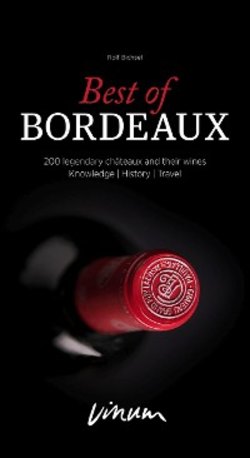Читать книгу Best of Bordeaux - Rolf Bichsel - Страница 27
Оглавление27
Early years History
flat gravel knolls transported from the Pyrenees by the Garonne in prehistoric
times, which are very good at regulating the water balance thanks to their gentle
undulations and the excellent filtration capacities of their soils (preventing the
vine roots from rotting in overly damp ground, or conversely from drying out
excessively in the Atlantic weather with the exception of a few days or weeks
between mid-July and mid-August that cause the delay in ripening which is one
of the secrets behind great Bordeaux). The fact that producers also flirted with
rather dishonest methods to acquire these suddenly extremely precious soils
is illustrated by the case of Pierre de Mazure de Rauzan who was involved in
estates such as Latour, Pichon Longueville, Rauzan Gassies and Rauzan-Ségla
as founder, director or owner: he would lend small producers money in an ap-
parently benevolent fashion, and when they were unable to pay it back he pock-
eted their land.
Another illustrious estate owner Nicolas Alexandre de Ségur, the ‘prince of
vines', popularised his wines Latour, Mouton, Calon and Lafite at the court of
the French king from 1716 onwards via the intermediary of the Marechal de
Richelieu. Lafite was said to be a treatment for gallstones. Legend also has it
that the Marquis de Ségur adorned his waistcoat with polished Médoc pebbles
rather than precious stones in order to demonstrate the source of his wealth.
Another regular consumer of his wines was the first British Prime Minister Sir
Robert Walpole, ensuring that Ségur wines enjoyed success in London. Be-
tween 1705 and 1711, the ‘London Gazette' newspaper (founded by the journalist
Henry Muddiman in 1667 and still in existence today) listed privateer booty for
auction, including on 22 May 1707 hundreds of barrels of Haut Brion, Margaux,
Latour and Lafite which all fetched impressive prices several times higher than
standard ‘claret'. So it is no surprise that local merchants began looking for more
affordable alternatives. As the four aforementioned top wines were virtually
una
ff
ordable in the 1727 vintage, one Bordeaux broker wrote a letter to the cel-
lar master to the heir to the throne suggesting a replacement which he tastily
described as follows: ‘Never in my life have I tasted a Chateau d‘Issan so good
as this vintage. It truly is a wine full of charm which I would very much like to
send to the Prince.'
From then on, new Bordeaux from fairy-tale Bordeaux chateaus became a
status symbol of the rich and beautiful. In the second half of the 19th century,
Emperor Franz Joseph of Austria-Hungary could be counted among Issan's fans,
and the ambassador and future US President Thomas Je
ff
erson said ‘there can-
not be a better bottle of Bordeaux wine than Margaux 1784'. Château Margaux
was praised by Rossini and drunk by Engels, who gave a simple answer to a
question from Karl Marx's daughter Eleanor about what he considered to be the
greatest expression of happiness: ‘a Château Margaux 1848'.
